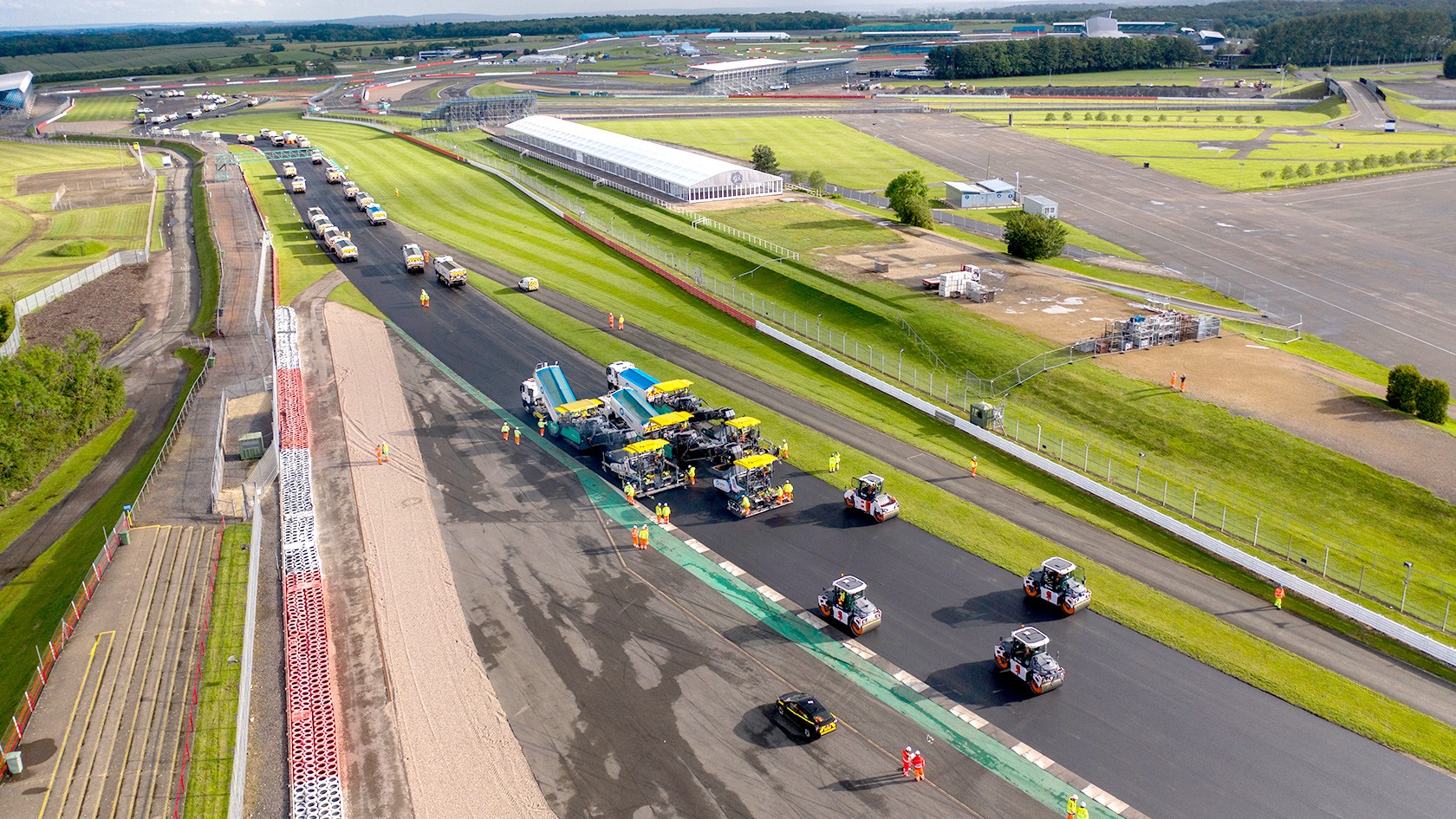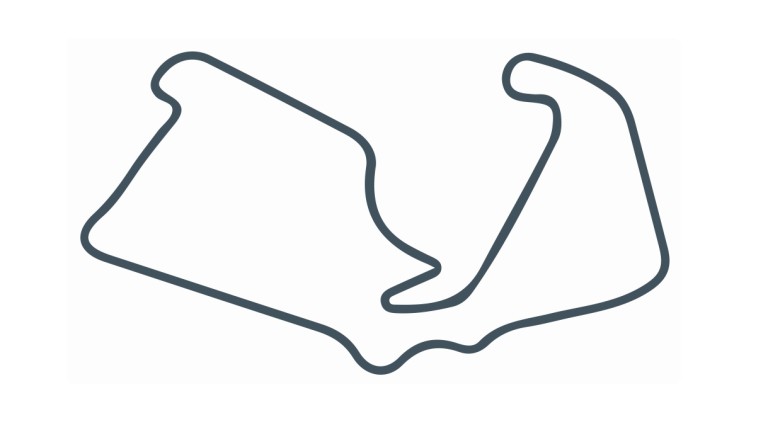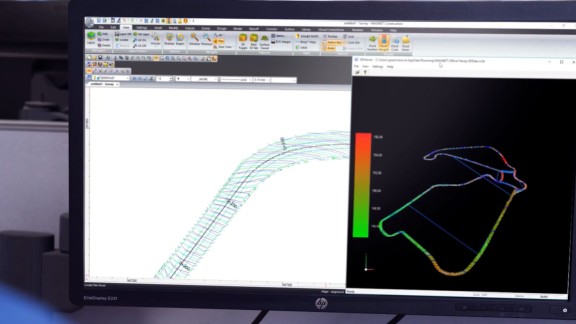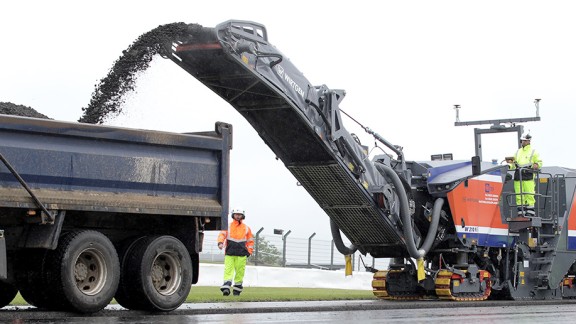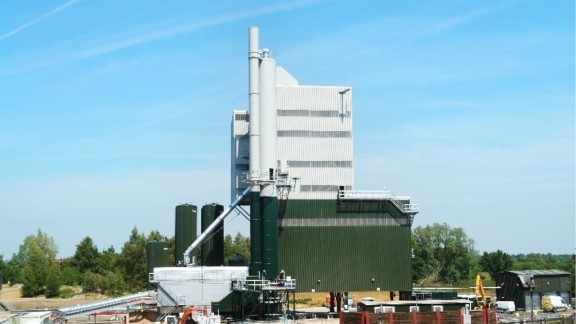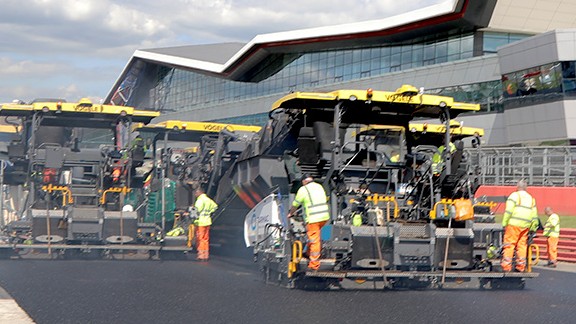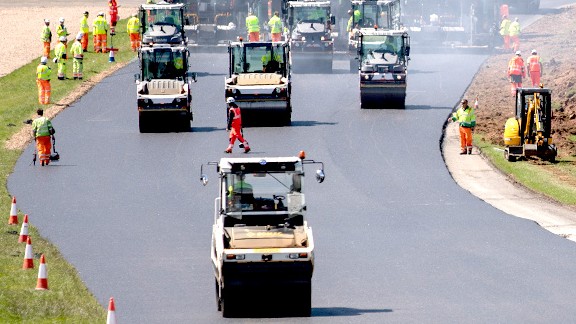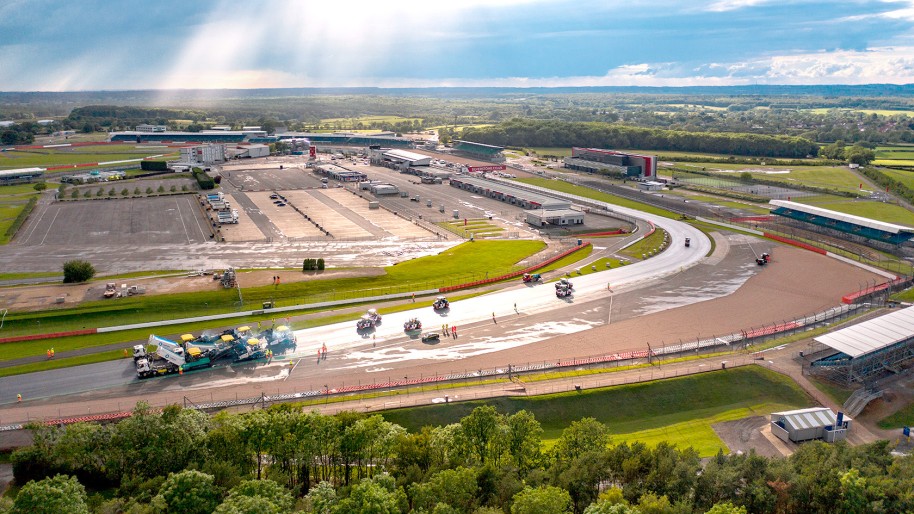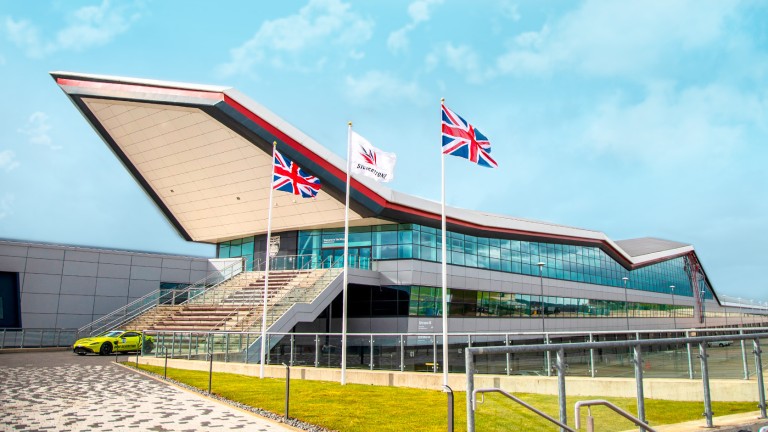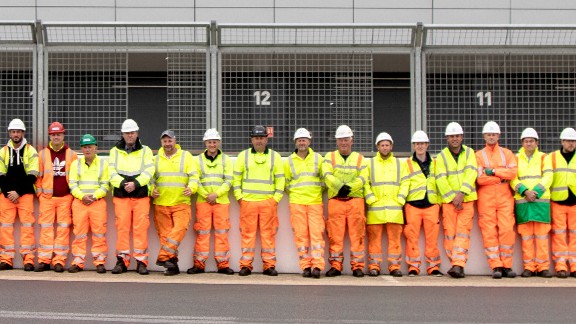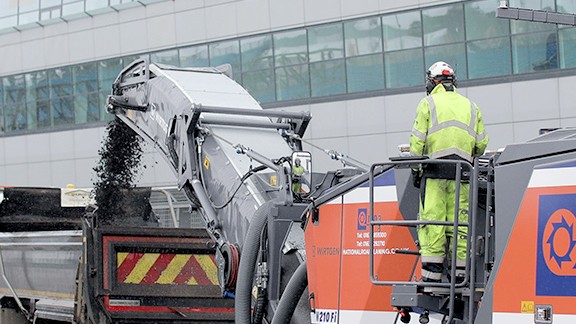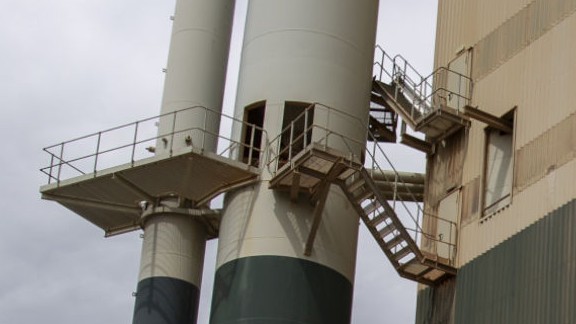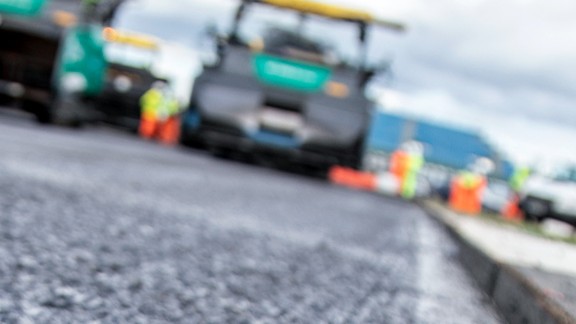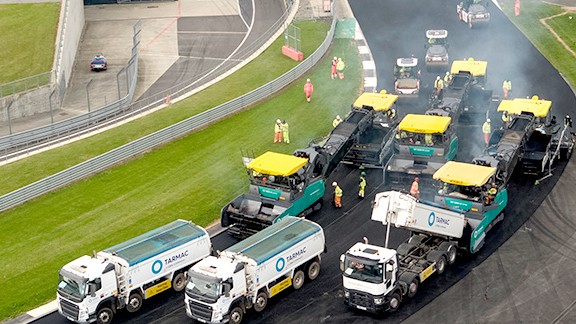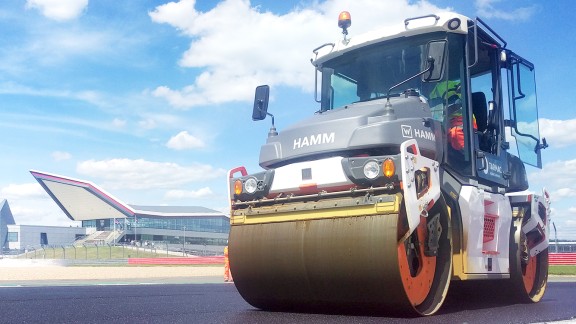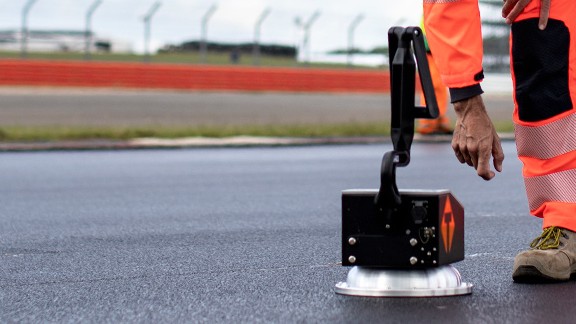Business as Usual for Wirtgen W 210 Fi Cold Milling Machines
During the development of the latest generation of large milling machines, Wirtgen naturally also thought of the operators. For instance, setting up the machines for 3D operations is now very easy. The engineers have also substantially simplified the mounts for the sensor systems on the weather canopy of the machines. This new system made it much easier for the operators of the two Wirtgen W 210 Fi large milling machines used on the project to deliver a good job. Although the average milling depth for the whole circuit was 7 cm (2.76 in), it actually varied considerably at almost every point on the racetrack. When the milling was completed, it had taken the highly experienced Tarmac team only four days to remove 87,000 m² of asphalt from the racing circuit.
Benninghoven Mixing Plants Produce High-Tech Asphalt
The production of the asphalt mix required for the resurfacing project at Silverstone was almost a science in its own right. For example, Tarmac first removed a major proportion of the fines present in the crushed stone by washing. The cleaned stone was then used in the fresh mix produced by two Benninghoven asphalt mixing plants at Tarmac’s Elstow and Harper Lane sites. Despite complex formulations with special bitumen and high-tech aggregates, the plants were able to fulfill the stringently controlled Formula 1 quality standards. The result is a highly durable asphalt surface designed to sustainably withstand the extreme lateral loads of hard braking and fast cornering maneuvers. At the same time, it considerably lessens the risk of new bumps appearing on certain sections of the circuit.
The on-site logistics were just as challenging as the asphalt production. The challenge here was to transport 360 t of asphalt an hour to the circuit.
Vögele Pavers Guarantee an Asphalt Package in Formula 1 Quality
The task of paving the new asphalt layers was assigned to teams of Vögele machines. Three SUPER 1800-3i pavers worked in unison with three MT 3000-2i Offset mobile feeders. Here, the mobile feeders played a decisive role in assuring the required paving performance and quality by eliminating the need for transferring material to the pavers from trucks. While the mobile feeder operators concentrated on transporting the material and liaison with the truck drivers, the paver operators were able to focus exclusively on the actual paving process.
A further contribution to paving quality was made by the deployment of the pavers in a V-shaped formation. The two SUPER 1800-3i pavers on the left and right lanes progressed in a slightly staggered formation behind the paver on the centre lane. The three pavers worked “hot on hot” during the paving process to create a continuous, seamless surface across the entire width of the track. Extreme importance was also attached to the excellence of the asphalt surface in other respects. For instance, Tarmac constantly checked and documented whether the paving was carried out within the correct temperature limits. To enable this, all three pavers were equipped with RoadScan, Vögele’s non-contacting temperature-measurement system.
Hamm Heavyweights Utilize Onboard Intelligence during Compaction
The technologies from Hamm played a particularly important role in the final compaction of the 3 cm (1.18 in) binder course and the 4 cm (1.57 in) surface layer. Thanks to WITOS HCQ, the HD+ and DV+ series tandem rollers were able to deliver intelligent compaction. “HCQ” – Hamm Compaction Quality – is an intelligent compaction system combining several products for the measurement, monitoring, documentation and control of compaction processes. The system monitors compaction progress in real-time and displays it on a screen in the operator’s cabin of the roller.
WITOS HCQ thus increases the efficiency of the compaction process and makes an active contribution to the achievement of flawless surface quality. Proof of this can of course also be provided in cases like the challenging resurfacing project at the Silverstone Circuit: Tarmac achieved full compliance with the stipulated asphalt surface grip characteristic (roughness) of 0.28, calculated on the basis of the International Roughness Index (IRI).
